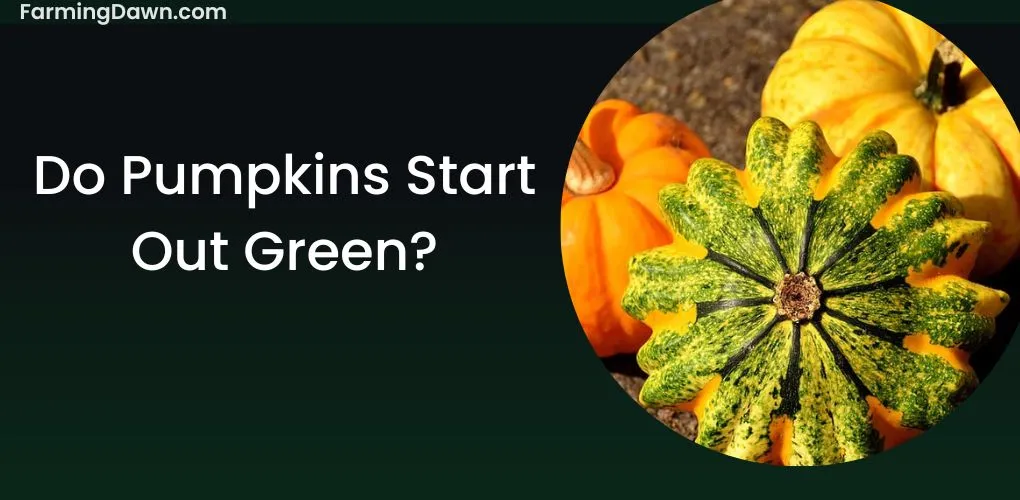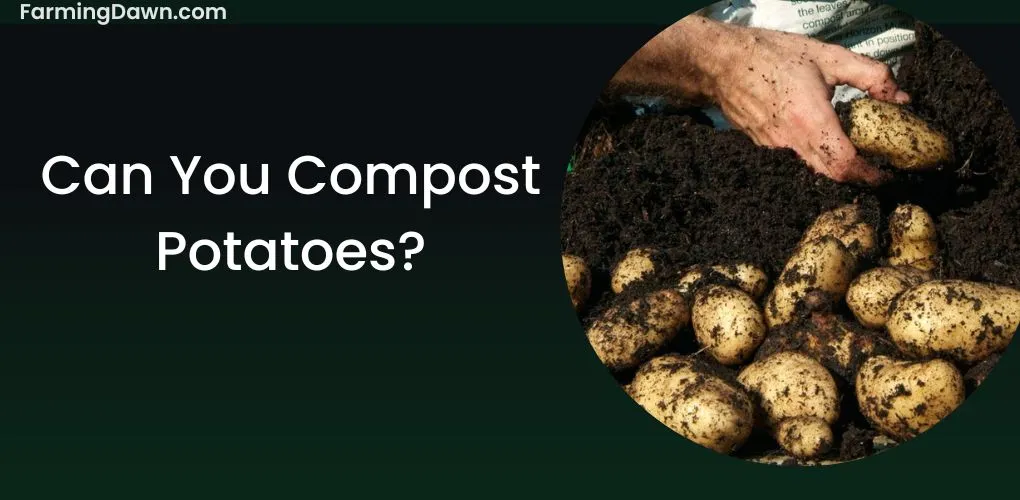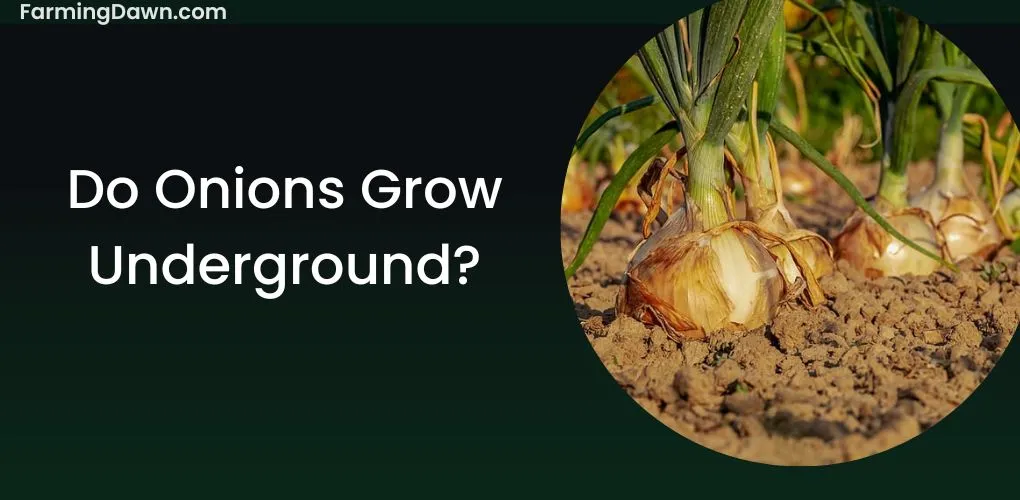We often associate pumpkins with their iconic bright orange color, but have you ever wondered what color pumpkins are when they first start growing? Do pumpkins start out Green? It might surprise you that pumpkins begin life as green things.
Today we will dive into the science behind pumpkin growth and color change and examine why pumpkins shift from green to orange.
Do Pumpkins Start Out Green?
Yes, pumpkins are initially green before gradually changing hue as they grow older. The transformation of a pumpkin from green to orange is known as ripening and happens as a result of carotene, a pigment, building up inside the fruit.
The pumpkin is ready to be harvested and used for a variety of tasks, including carving, cooking, and decorating when its color changes.
Are There Green Pumpkins?
Yes! There are green pumpkins. Pumpkins come in many colors, including green, white, blue, and even striped ones, though most are known for their orange hue.
Green pumpkins, often called “Green Striped Cushaw” pumpkins, are an unusual kind with a smooth, light-green surface and a bottle-shaped form.
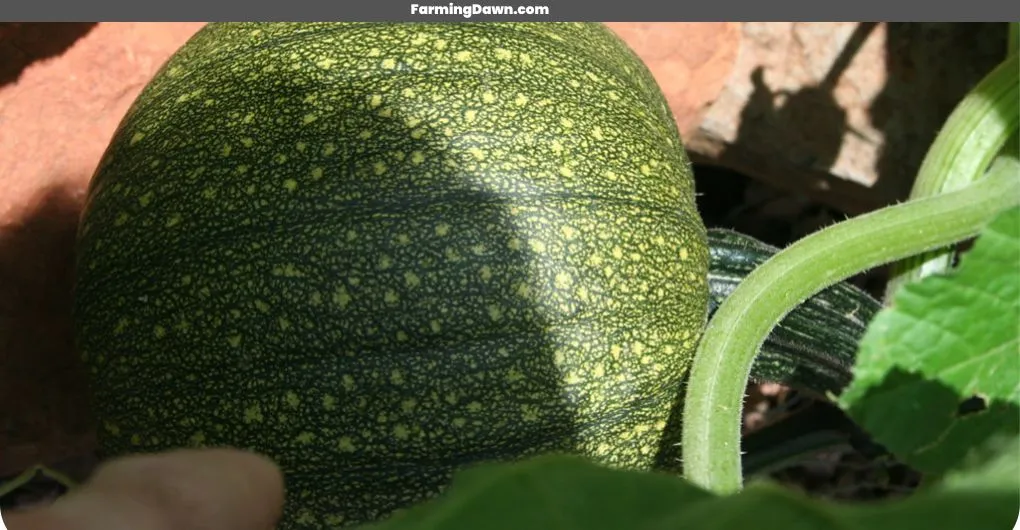
What Are Green Pumpkins?
Green pumpkins, also known as immature pumpkins, are simply pumpkins that have not fully ripened yet. These green pumpkins, also known as “green fat pumpkins” or “Neon green pumpkins,” are frequently used as ornaments because of their vivid green color.
These pumpkins are often smaller than mature pumpkins and are still a brilliant green color. They are less frequently seen in supermarkets because they are not as frequently grown for commercial purposes. Still, they can be obtained in backyard gardens or nearby farmers’ markets.
Green pumpkins lack the sweetness and have a more bitter flavor than mature pumpkins. Additionally, their durable shell makes them perfect for fall decorating.
What Color Are Pumpkins When They First Start Growing?
Typically, pumpkins have a light green color when they initially begin to grow. The immature leaves and stems have this hue because chlorophyll is present in them. The pumpkin’s green color will get darker as it develops and grows, and its color will also change.
Pumpkins can develop in various colors, including yellow, orange, and even blue or grey, depending on the cultivar. However, growth conditions like temperature and sunshine exposure can also affect the final shade, genetics account for a major portion of the pumpkin’s final color.
Do White Pumpkins Start Out Green?
Like their orange counterparts, white pumpkins begin as green and gradually change color as they ripen. Chlorophyll, which is necessary for the pumpkin to produce energy through photosynthesis, is the cause of the green color.
Chlorophyll degrade as the pumpkin matures and grows, revealing more of the white pigmentation that has always been there. The Green disappears, revealing the white pumpkin in all its glory.
Are Pumpkins Green Before They Turn Orange?
Pumpkins, really fact, start as green before turning orange. In actuality, pumpkins are born green and mature on the vine.
The pumpkin’s skin will gradually transform from a vivid green to a more muted green before turning the distinctive orange hue associated with Halloween and the fall during this period.
The process of ripening, which causes the pumpkin to create more sugar and alter color, causes this color change. So, remember that those brilliant orange orbs were originally a lively green color the next time you see a pumpkin farm!
Why is My Pumpkin Green After Ripening?
Pumpkins are frequently associated with their vivid orange color. However, it’s not unusual for some varieties to have a green tint. Several things could lead to this.
Lack of sunshine
First, pumpkins require a lot of sunlight to fully mature and develop their color. Therefore, if the plant is shaded for an extended period of time or doesn’t get enough sunlight, the pumpkin may stay green.
Cool temperatures
Furthermore, chilly temperatures might hinder the ripening process, which makes it challenging for the pumpkin to change color.
Natural varieties
Lastly, some pumpkin cultivars, including the Green-Striped Cushaw and the Green Jarr, are naturally green. Green pumpkins can be used in the same manner as their orange counterparts and are safe to consume for several reasons.
Pumpkin Growing Stage
Their pumpkins grow in a specified order of stages:
Sprouting and Germination are the First Stage
Planting the seeds is the first step in cultivating pumpkins. Since pumpkins are a warm-season crop that demands warm soil and air temperatures, it is advisable to plant pumpkin seeds after the last frost.
To promote germination, it’s critical to maintain the soil’s moisture level after seeding. The seeds should sprout, and the young plants should begin to produce leaves in 7–10 days.
The 2nd Stage: Vegetative Development
The vegetative growth stage comes next. At this point, the pumpkin plant develops leaves, stalks, and a root system. The plant needs a lot of water and nutrients at this stage because it is developing swiftly.
This stage lasts for two to three months, during which the pumpkin plant expands to a height of several feet and produces a large number of leaves.
Flowering and Pollination
The flowering and pollination stage is the third stage of pumpkin growth. The pumpkin plant starts to generate flowers at this time, and those blossoms will eventually turn into fruit.
The smaller size and existence of a tiny pumpkin at the flower’s base help female flowers to be recognized from male flowers. Male flowers have an earlier appearance and are crucial for pollination.
When the female flowers emerge, it is crucial to manually pollinate them, especially if bees or other pollinators are not visiting the plant.
Fruit Development
Fruit development is the fourth stage of pumpkin growth. The pollinated female flowers turn into pumpkin fruits at this time.
At this point, the plant’s attention turns from vegetative development to fruit production as the fruit continues to develop and mature. To ensure the pumpkin fruit grows to its best capacity during this time, the plant should receive lots of water and nutrients.
Harvesting is the fifth stage.
Harvesting is the last stage of the pumpkin-growing process. You should keep an eye out for a change in color from Green to yellow-orange and for the fruit to feel firm to the touch to know when your pumpkins are ready to be picked.
When the pumpkin is finished growing, you can remove it from the vine, being careful not to harm the stem. Up until they are prepared for usage, keep the pumpkins in a cool, dry area.
How to Turn Green Pumpkins Orange?
Turning green pumpkins orange is a quick method that can give your Halloween decorations or fall garden an extra dash of autumnal appeal. Follow these instructions to turn green pumpkins orange whether you want to dress up a pumpkin display or present a gift to a friend.
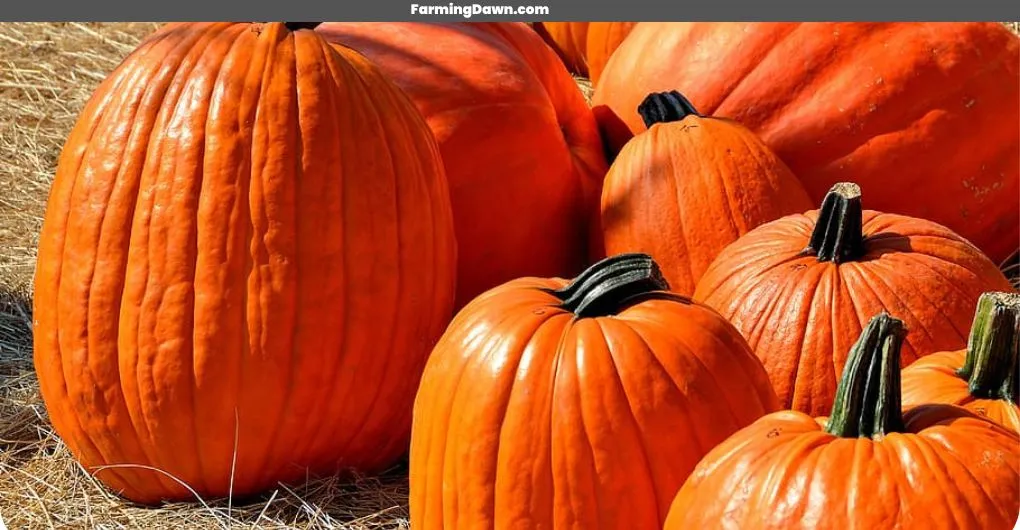
Select mature, green pumpkins
Before turning them orange, ensure they are mature and have reached their full size. The skin of a ripe pumpkin will be tough and challenging to scratch with a fingernail.
Put them in the sun
The pumpkin’s chlorophyll, which gives it its green color, will be broken down by the sun. The pumpkin will turn orange more quickly as it is exposed to more sunshine. Now your pumpkin will become a pale green pumpkin.
Keep an eye on the temperature
It’s crucial to maintain a warm environment, with daytime highs of 80 to 90 degrees Fahrenheit and nighttime lows of 60 to 70 degrees, to convert green pumpkins to orange. The process will go more quickly because of the warmer temperature.
Rotate the pumpkins regularly
Turn the pale green pumpkin frequently to ensure that all of their surfaces receive an equal amount of heat and sunlight. The color shift will be more equally distributed as a result.
Keep them out of the shade
Make sure no other plants or leaves cover the pumpkins. The speed at which these pale green pumpkins turn orange depends on how much shade they receive.
You can quickly transform green pumpkins into lovely fall orange pumpkins by following these simple steps.
When Do Pumpkins Turn Orange?
The answer to this question is not as simple as a specific date because the time of the color change in pumpkins relies on a number of variables, including the type of pumpkin, the climate, and the amount of sunshine exposure.
Pumpkins often start turning orange between 75 and 100 days after planting. As the pumpkin develops and matures, its orange color will get progressively darker.
Ensure your pumpkins receive enough sunlight, water, and nutrients during the growing season to develop a vivid, rich orange color.
Will Dark Green Pumpkins Turn Orange?
Dark green pumpkins are often grown for ornamental purposes. Still, they are not typically used for culinary purposes like their orange counterparts.
Some dark green pumpkins may eventually turn orange as they mature, but this is not guaranteed. The color change from Green to orange is influenced by many factors, including the type of pumpkin, the growing conditions, and the length of time the pumpkin is allowed to mature on the vine.
In general, if a dark green pumpkin is left to mature for an extended period, there is a higher likelihood that it will eventually turn orange.
Will Pumpkins Ripen If Picked Green?
Pumpkins are occasionally harvested before they are entirely ripe, prompting many gardeners and homeowners to question if they will continue to ripen after being harvested.
The answer is yes, and pumpkins will ripen after being picked green.
When the skin of the pumpkin is firm and challenging to pierce with a fingernail, it is said to be ripe. A pumpkin will continue to ripen and develop its full flavor and color if it is picked before this point.
Put your green pumpkin in a warm, sunny location for a few days to help it mature. Be patient; it could take the pumpkin anywhere from 5 to 10 days to ripen fully.
The pumpkin can be cooked with, decorated, or carved when it has ripened. If you intend to carve the pumpkin, be sure to get a fully ripened pumpkin.
Green pumpkins won’t stay as long as ripe pumpkins, which are also easier to carve. Waiting until your pumpkin is fully ripe will improve the flavor and texture if you’re going to use it in cooking.
Can You Eat Green Pumpkins?
Yes, Green pumpkins can indeed be eaten as a vegetable and are edible. They are a flexible element used in many cuisines, including soups, stews, and curries.
Green pumpkins have a little bitter flavor compared to the more frequent orange pumpkins, but when they are cooked with seasonings and spices, they deepen the flavor of the dish.
Tips on Eating Green Pumpkins
These adaptable gourds come in sweet and savory varieties and have several health advantages.
Use green pumpkins in stews and soups
Green pumpkins are excellent additions to soups and stews. They add a creamy texture to various meals and have a delicate flavor that pairs nicely with other components.
The pumpkin only needs to be peeled, chopped and added to the pot. It should then be cooked until soft.
Roasting
It’s simple and pleasant to cook green pumpkins by roasting them. The pumpkin should only be sliced into wedges, brushed with olive oil and salt and peppered. The pumpkin should be baked for 15 to 28 minutes, or until it is tender and just browned.
Create a puree
You may use green pumpkin puree in pies, muffins, and cakes, among other things. Peel and chop the pumpkin, then boil or steam it until it is cooked to make the puree. Use the smoothed-out pumpkin in your recipe after blending it.
Include them in curries
Green pumpkins give dishes a creamy texture and a hint of sweetness. In the final 10 minutes of simmering, simply chop and peel the pumpkin before adding it to the curry. In this way, the curry’s taste may be absorbed by the pumpkin without affecting its shape.
Grilled or pan-fried
Green pumpkins can also be pan-fried or grilled for a crispy surface and tender interior. Simply cut the pumpkin into rounds, sprinkle both sides with salt and pepper, and fry until browned.
Green Varieties of Pumpkins
Below I have listed a complete of green varieties of cucumbers. You can check it out and see what suits best for you and your garden. Number 13 is my personal favorite:
- Green Hubbard
- Emerald City
- Green Striped Cushaw
- Green Kuri
- Green Giant
- Green Melbourne
- Green Apple
- Green Turban
- Green Loko
- Green Jumbo
- Green Cushaw
- Green Dakota
- Green Fairytale
- Green Boone
- Green Calabash
- Green Summer
- Green Magician
- Green Angel
- Green Striped Musquee
- Green Rice Paddy
- Green Star
- Green Speckled Hound
- Green Banana
- Green Sugar
- Green Striped Lady
- Green Hopi
- Green Rice
- Green Goliath
- Green Evergreen
- Green Sugar Loaf
Do Pumpkins Start Out Green? Final Thoughts
Knowing how pumpkins develop might help us appreciate the effort and time spent growing these useful gourds. To conclude this topic, pumpkins start as green, unripe fruit.
I hope that this post answers all of your questions related to pumpkins. If you have any other questions, tell me in the comments.
Every vegetable has its color at different stages of ripening. Check out other articles to learn more:

